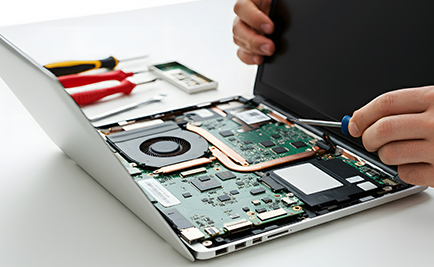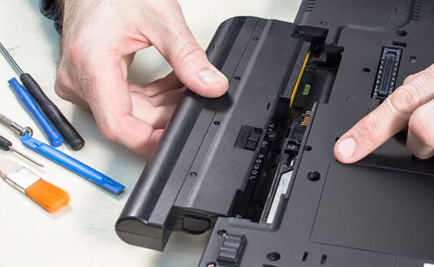A laptop's battery is an essential part of its autonomous operation, allowing you to work or play freely, without depending on a power source. However, over time and with use, it inevitably loses its efficiency, which can lead to unexpected interruptions, slow down your work or disrupt your activities. What to do when the battery seems to be dead? Are there ways to save it, or should you consider replacing it? Here's everything you need to know to look after your battery, identify signs of failure and keep your device in perfect working order.
Why does a battery become unusable?
Just like a car battery, a laptop battery wears out over time and with use. Most batteries have an estimated lifespan of between 300 and 500 full recharge cycles, which corresponds to around two to five years, depending on the intensity and conditions of use. However, certain factors can accelerate this deterioration, including :
- Repeated overcharging: Keeping the computer plugged in continuously, even after the battery has been fully recharged, can reduce its capacity to store energy.
- Extreme temperatures: Prolonged exposure to excessive heat or cold can damage the battery's internal structure.
- Intensive use: Power-hungry tasks such as video editing or gaming place heavy demands on the battery, and can shorten its lifespan.
When a battery no longer holds a charge, drains rapidly or stops working altogether, this is often a sign that it has reached the end of its service life. To prolong its life, it's advisable to follow certain best practices, such as limiting unnecessary full recharging cycles and keeping the charge level between 20% and 80% wherever possible.
Possible solutions for a laptop that won't switch on
When your laptop refuses to turn on, even when connected to a power source, it's important not to panic. This problem can have several origins, some of which can be easily resolved:
- The AC adapter: A damaged or faulty adapter is one of the most common causes. Try another compatible adapter to see if your device powers up.
- The power connector: Sometimes a poor connection at the power port can prevent power from flowing. Inspect this component for damage or obstructions.
- The motherboard: Although rarer, a failure of the motherboard can lead to a complete computer malfunction. In this case, it's best to consult a qualified technician for a precise diagnosis.
If none of these solutions solves the problem, don't hesitate to contact our helpdesk. Our experts are on hand to help you diagnose and resolve any faults, so you can get your device back up and running as quickly as possible.
Replacing a dead battery: an effective, long-lasting solution
Unfortunately, a dead battery can't be repaired, but that doesn't mean your computer is doomed. Replacing a faulty battery is a simple and lasting solution for giving your device a new lease of life. When buying a new battery, make sure you choose a model that is perfectly compatible with your laptop, to ensure optimum performance. If you need help identifying the right model, our team will be happy to advise you.
It's also important to check that the AC adapter is in good condition, as a faulty adapter may be the source of the problem. In some cases, simply replacing this accessory may be enough to restore your computer's autonomy and performance.
Adopting good practices, such as maintaining a moderate charge and avoiding excessive use, will help prolong the life of your battery. By taking good care of your equipment and replacing faulty components in good time, you'll be able to continue enjoying your laptop for many years to come.

 ES
ES
 DE
DE
 FR
FR
 IT
IT



